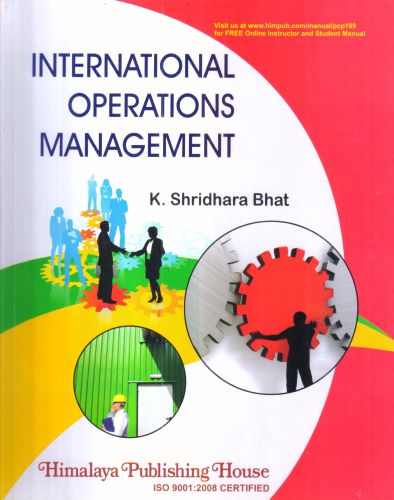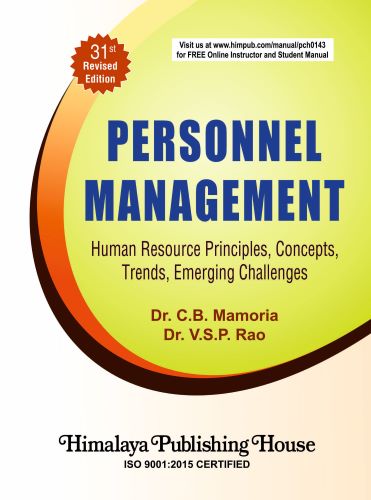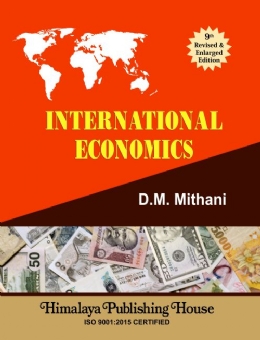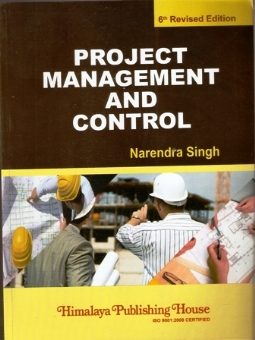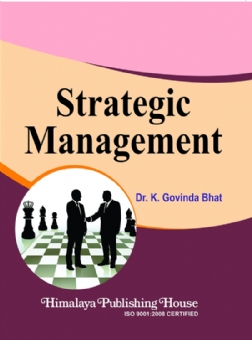The business world is now characterised by multinational firms, global markets, offshore manufacturing and managers who move from nation to nation. Today’s operations manager are required to think globally and act globally and have become international operations managers as they have to carry out operations in a global environment.
Advancements in information technology, telecommunication and transportation have facilitated international operations management to be much easier now a days compared to what it was in the 1950s. The management of global firms in the 21st century requires that decisions must be made faster and operations must be quick to change directions in order to survive.
The operations functions is at the very soul by any manufacturing or service organisation. The operations function includes such activities as forecasting production, scheduling of labour and production, total quality management, productivity management, facility layout and locations, materials management, purchasing and incoming and outgoing logistics.
Firms competing in the international markets strive to achieve global standards for their products and services and also aim at becoming world class manufacturers. In this environment, it is important for every student of operations to have some understanding of the impact of the international dimension on functional and general management. This book makes an attempt in that direction.
This book has been organised into four units comprising 18 chapters each chapter comprises ‘learning objectives’, side notes, exhibits, box illustration, ‘points to remember’, key words used, objective questions,
discussion questions, and chapter case.
This book is intended to serve as a reference book for students specialising in international business management and also for practicing managers involved or interested in operations management of global firms.
Contents –
Unit 1
Chapter 1 : Introduction to International Operations Management
Introduction
Competitiveness
Ways to Compete
Globalisation
Competitive priorities
Operations in a Global Environment
A Global View of Operations
Differences Between Domestic Operations Management and International Operations Management
Managing International Operations Versus Internationalising Operations Management
International/Global Production
A Road Map to Global Operations
Forms of Global Operations
Stages in Global Operations Planning
Points to Remember
Key Words Used
Objective Questions
Review Questions
Discussion Questions
Case: Make-or-Buy Decisions at Boeing
Chapter 2 : Globalisation of Business
introduction
Globalisation of Business
What is Globalisation?
Operations Foundations of Globalisation
Operations in Global Business Strategy
Managing in The Global Market Place
Points to Remember
Key Words Used
Objective Questions
Review Questions
Discussion Questions
Case 1: The Coca-Cola Company Goes World Wide With Local Strategy
Case 2: Global Strategy at General Motors
Chapter 3 : International/Global Business Strategy and Operations
Introduction
Strategic Choice
Strategic Alliances
Strategic Changes Required By Globalisation
Globalisation of Operations
Points to Remember
Key Words Used
Objective Questions
Review Questions
Discussion Questions
Case 1: Mcdonald’s Everywhere
Case 2: Pizza Hut in Russia
Chapter 4 : Global Operations Strategy
Introduction
International/Global Operations Management Strategy
International Operations Strategy
International Manufacturing Configurations
Ten Major Categories of Operations Strategies
Developing The International Operations/Manufacturing Strategy
Points to Remember
Key Words Used
Objective Questions
Review Questions
Discussion Questions
Case: Operations Strategy at Nike
Unit 2
Chapter 5 : International Productivity, Quality and Competitiveness
Introduction
Measurement Systems
Total Quality Management
Productivity Concepts and Measures
Productivity Measurement
Productivity Measurement Approaches at The Enterprise Level
Productivity Measurement at The industry Level
Causes of Productivity Change
Global Productivity Issues
Interrelationship Among Quality, Productivity and Competitive Advantage
Points to Remember
Key Words Used
Objective Questions
Review Questions
Discussion Questions
Case: Quality Problem at Europa Airlines
Chapter 6 : Global Manufacturing and Materials Management
Introduction
The Firm As a Value Chain
Strategic Choice
Manufacturing and Materials Management in Global Business
Make or Buy Decisions
Co-ordinating a Global Manufacturing System
Outsourced Manufacturing
Global Manufacturing Strategies in The Internationalisation Process
Manufacturing Outsourcing
A Frame Work of Analysis
Insourcing/Outsourcing Decisions
Contract Manufacturing
Points to Remember
Key Words Used
Objective Questions
Review Questions
Discussion Questions
Case 1: The Ge Production Process and Six Sigma
Case 2: Dell Computer – Replacing Inventories With information
Chapter 7 : Managing International Sourcing
Introduction
Major Reasons
Problems Associated With International Sourcing
Barriers to Worldwide Sourcing
The International Sourcing Process
Organising for Worldwide Sourcing
International Procurement offices
Costs Associated With Global Sourcing
Managing International Currency Risk
Management of Foreign Exchange Risk
Approaches to Currency Risk Management
Counter Trade
Quality Management in Global Sourcing
Importance of Supplier Quality
World-Class Supplier Quality Performances
Supplier Evaluation
Points to Remember
Key Words Used
Objective Questions
Review Questions
Discussion Questions
Case: Sourcing at Veroxide Group (VG)
Chapter 8 : International Purchasing and Supply Management
Global Sourcing, Purchasing and Supplier Relations
The Purchasing Function
Rationale for International Purchasing
Advantages of International Purchasing
The Role of International Purchasing in The Supply Chain
Activities of Purchasing Department
Strategic Supply Management
Strategic Supply Management Activities
Supply Chain Activities and Functions
Points to Remember
Key Words Used
Objective Questions
Review Questions
Discussion Questions
Case: The Vermont Engineering Company
Chapter 9 : International Logistics and Supply Chain Management
International Logistics
Major Concepts in International Logistics
International Supply Chain Management
The International Supply Chain/Global Supply Chain
The Globalisation of Supply Chains
Managing Global Logistics
Components of International Logistics Management
The Global Logistics Management Process
Cost-Service Trade-off Analysis
International Distribution
Management of International Logistics
Complexities and Uncertainties in Global Supply Chains
Points to Remember
Key Words Used
Objective Questions
Review Questions
Discussion Questions
Case : Supply Chain Management Reduces Capacity Requirements
Unit 3
Chapter 10 : Managing Human Relations in Global Operations
Introduction
Strategic International Human Resource Management (SIHRM)
Human Resource Objectives
Strategies for International HRM
Factors Affecting International HRM Strategy
Role of Human Resource Management in International Business
International Employee Relations
Increasing The Value of Human Resources
Points to Remember
Key Words Used
Objective Questions
Review Questions
Discussion Questions
Case: Global Human Resource Management At Coca-Cola
Chapter 11 : Effective Global Project Management
Introduction
Project Management Basics
Planning, Scheduling and Controlling of Projects
Key Decisions in Project Management
Network Fundamentals
Terms Used in Network Based Scheduling Techniques
Networking Conventions
Reason for incorporating Dummy Activity
Project Scheduling Techniques
Fulkerson’s Rule or Algorithm
Determining Probability of Meeting Scheduled Date in Pert Analysis
The General Relationship of Time and Cost
Resource Leveling
Project Control
Project Success Factors
International Project Management
Major Issues Surrounding The Management of International Projects
Points to Remember
Key Words Used
Objective Questions
Review Questions
Discussion Questions
Case: The Filming of “Apocalypse Now”
Chapter 12 : Technology Management for Global Operations
Introduction
How Technology Affects Operations
Production Technology and Technology Management
Design Technology
Production Technology (or Manufacturing Automation)
Automation Issues
Management of Technology
Creating and Applying Technology
Technology Strategy
Technology Choice
Guidelines to Implementation of Technologies
Managing Technological Change
Deciding On Automation Alternatives
Managing Technology in a Global Environment
Technology Decisions
Benefits and Challenges of Technology
Impacts of Technology On People
Technology Development and Adoption
Technological innovation
Technology Transfer Across Borders
Technology and Productivity Improvement
Technology Investments and Their Benefits
Risks in Adopting New Technologies
Managing Technological Change
Impact of Technological Forces On Global Operations Strategies
Understanding Technology in Operations
Role of Computer and information Technology in Operations
Points to Remember
Key Words Used
Objective Questions
Review Questions
Discussion Questions
Case: The Rise of Finland’s Nokia
Chapter 13 : Managing International Service Operations
Introduction
Managing Service Operations
General increase in Demand for Services
The increasing Role of Services in International Trade of Goods
Challenges Facing Service Operations Managers
Types of Services Global Environment for Service Businesses
Forms of Globalisation of Services
Trends in Service Globalisation
Designing Service organisations
Service Strategy: Focus and Advantage
Service Design
The Service System
Service Productivity and Quality
Service Productivity Management
Measurement of Service Productivity
Achieving Service Quality
Technology in Services
Service Recovery
Service Guarantee and Refunds
Waiting Line Management
Internationalising Services
Problems in International Service Operations
Points to Remember
Key Words Used
Objective Questions
Review Questions
Discussion Questions
Case: Offshoring a Call Center for Ever dream
Chapter 14 : Improving Operations Performance
Introduction
Opportunities for Improving Operations Performance
Operations Analysis of Performance Differences
Difficulties in Improving Operations Performance
Operations Management Approaches to Improving Operations Performance
Strategic Management Approaches to Improving Operations Performance
Total Quality Management
TQM Framework
Points to Remember
Key Words Used
Objective Questions
Review Questions
Discussion Questions
Case: The European Aerospace Manufacturer
Unit 4
Chapter 15 : The International Transaction/Ethics
Introduction
Ethics in Global Management
Relationship Among Ethics, Culture, Religion and Society
Four Forces That Shape Ethical Conduct
Making The Right Decision
Ethical Dilemmas and Social Responsibilities
The Globalisation of The Fight Against Corruption
Points to Remember
Key Words Used
Objective Questions
Review Questions
Discussion Questions
Case: Ethics and Corruption in The Global Market Place
Chapter 16 : integrating Global Operations
Introduction
Coordination and Control in International Business
Integrating Mechanisms
International Strategy Implementation
Strategy, Structure and Co-ordination in International Business
Marketing – Manufacturing Coordination
Formal Integrating Mechanisms
Control Systems
Types of Control Systems
Control Systems for Global Operations
Tools for Global integration
Points to Remember
Key Words Used
Objective Questions
Review Questions
Discussion Questions
Case: Integrating Global Operations at Aetna
Chapter 17 : World-Class Operations Management
Introduction
Competitiveness and World-Class Manufacturing
Establishing an Operating Framework
Defining a World-Class Manager
World-Class Reasons for Globalisation
World-Class Operations
The Importance of Human Resources, Quality and Innovation in World-Class Operations
The Role of Quality and Innovation in World-Class Operations
World-Class Operations and Innovation
How Firms Reconfigure Themselves to Become World-Class
World-Class Operations, Mergers and Alliances
The Role of Ethics in World-Class Operations
World Class Manufacturing
Competitive Priorities of Manufacturing
Changing Competitive Priorities
World-Class Suppliers
World-Class Customers
Today’s Global Business Conditions
Path of World-Class Manufacturing
World-Class Manufacturing Strategy
Points to Remember
Key Words Used
Objective Questions
Review Questions
Discussion Questions
Case: The Incredible Japan
Chapter 18 : The Future of International Operations Management in The 21st Century
Introduction
International Business in The New Millennium
The International Business Environment
Coping with Changing Environments
Opportunities for Growth of International Business
Future Challenges to International Business
Future of International Business Management
Opportunities and Challenges for Managers in Global Operations
Points to Remember
Key Words Used
Objective Questions
Review Questions
Discussion Questions
Case: Global Internet and e-Commerce

